Feb 16, 2021 | Columns, Music
By Rhea Kapur (VI)
I recently finished reading the book On the Road by Jack Kerouac. You might have heard of it—the novel is an American classic, a roman à clef, an autobiographical chronicle of Kerouac’s (in the text, Sal Paradise’s) adventures hitchhiking across the country with his writerly friends: Neal Cassady (the infamous Dean Moriarty), Allen Ginsburg (Carlo Marx), and William S. Burroughs (Old Bull Lee), to name a few. Rife with casual sex, drugs, alcohol, poetry, jazz, and endless exploration, On the Road paints a comprehensive portrait of 1950s America, and it has come to define the Beat Generation: postwar nonconformists, disillusioned bohemians… those who championed spontaneity, psychedelics, and the journey, not the destination. On the Road is an anthem, the Beatnik ode to freedom, to wanderlust, to the quest for “it,” whatever “it” is—authenticity, purpose, the American ideal. The novel’s influence on literature and writing has been widely studied, but I’d like to explore how On the Road has shaped music and individual musicians as well as introduce a playlist that, to me, matches the novel’s message.
There’s no better place to start than the 10,000 Maniacs classic, “Hey Jack Kerouac.” Natalie Merchant, the band’s lead singer and main songwriter, penned the folksy tune, infusing her own opinions and frustrations with Kerouac and other Beatniks—like Ginsburg and Burroughs—into her work. She sings directly to Kerouac, who is at once the “brightest star” (after On the Road caught fire) and broken “little boy lost in our world that hated;” she recognizes the “tear-stained shock of the world” that hit when he “[went] away without saying goodbye.” Perhaps this line is a reference to Kerouac’s early death (caused by his excessive drinking), but I think it also speaks to the departure of the greater Beat Generation. Their call to pack and drive—to hit the road and see where it travels, to stand by the emptiness of the harsh red horizon they chased—faded almost entirely as the counterculture and civil rights movements of the 1960s and ‘70s took root. And what about where it stands now, in the progressive, fractured 2021? The wanderlust is relatable, and the lifestyle alluring, as Merchant sings, but in today’s context, On the Road reads like an anachronism—a privileged, misogynistic, old boy’s travelogue that offers no place of worth for women and people of color.
Nevertheless, many other artists revered Kerouac and the Beat Generation, or were at least considerably influenced by their message at its prime. There’s John Lennon (“Beatles” derives from “Beat!”), a huge fan of the writings of both Kerouac and Allen Ginsburg. There’s Bob Dylan, the regular Dean Moriarty himself! On the Road “blew his mind… and changed his life,” an influence particularly clear in Dylan’s songs “On the Road Again” and “Desolation Row” (inspired by another Kerouac work, Desolation Angels, along with Allen Ginsburg’s city poetry). There’s Jim Morrison, Patti Smith, Bruce Springsteen, the Grateful Dead… and the list goes on. Kerouac’s anthem of freedom, transcendance, and exploration lends beautifully to music, an art that itself strains to be free, to embody being free, to provide subconscious escape. Aspects of his subject matter may now read as out of touch, but it is because of this paralleled identity that Kerouac’s influence will always remain in tune.
I leave you with a playlist of my own, entitled “There was nowhere to go but everywhere.” The title is derived from one of my favorite passages in On the Road: “…because he had no place he could stay in without getting tired of it and because there was nowhere to go but everywhere, keep rolling under the stars, generally the Western stars.” I’ve filled it with all of the songs and artists mentioned above, along with others that embody Kerouac’s resigned, inexplicably consuming wanderlust. You’ll hear the AC/DC classic, “Highway to Hell”; Train’s “Drive By” and “California 37;” “Midnight Rider” by the Allman Brothers Band; Green Day’s “Stray Heart;” and many more. It’s a playlist for the open road – Kerouac’s road, yes, but also the Beatnik road, my road, and maybe even yours, too. Give it a listen, and keep faith; music will take you everywhere.
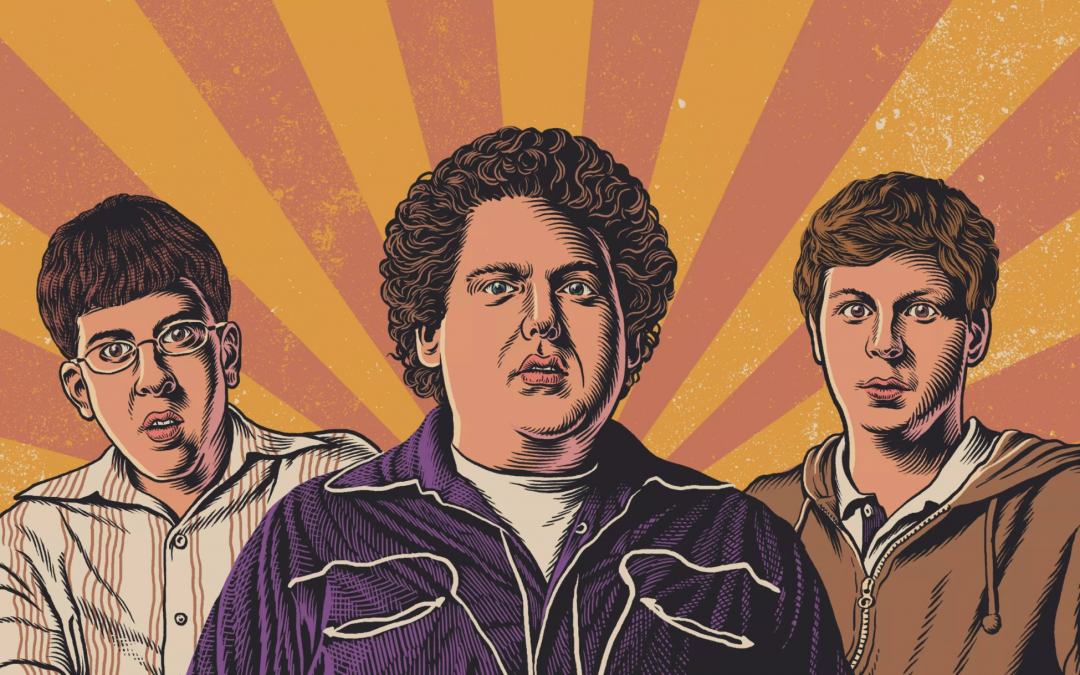
Feb 16, 2021 | Columns, Emma Drzala, Movies
By Emma Drzala (V)
With limited access to movie theatres over the past year, one must rely on the one thing nothing can seem to beat: streaming services. Netflix, Hulu, and HBOMax have all gained immense popularity this year; so, maybe it’s a sign to go back and rewatch an old classic. My movie of choice: Superbad. Directed by Greg Mottola and written by comedic geniuses Seth Rogan and Evan Goldberg, Superbad is a raunchy comedy that keeps you laughing for 1 hour and 59 minutes. The movie follows two inseparable best friends, Seth and Evan, who are hoping to get in one last “hurrah” before the conclusion of their senior year. The two friends, however, are only to be considered “super” unpopular. With two weeks to go in high school, the odd pairing, along with their sidekick Fogell, are finally invited to a high school party by the prettiest and most popular girl in school – but there is a catch. They must find a way to supply alcohol for the party. The three boys hope to impress the girls and eventually become their “headaches” of boyfriends. Fogell attains a fake ID under the name “McLovin,” but his attempt to buy alcohol quickly goes south. He becomes buddies with two lackluster cops and engages in some not-so-legal activities with them. Meanwhile, Seth and Evan are still trying to find ways to procure alcohol before the party begins. Superbad captures the awkwardness of the high school experience and dives deep into Seth and Evan’s comedic friendship. It is not just a movie that lands some random jokes, but the whole concept behind this masterpiece is where all the comedy lies. With stars like Jonah Hill (Seth), Michael Cera (Evan), Bill Hader (Officer Slater), Seth Rogan (Officer Michael), and Christopher Mintz (Fogell), a Rotten Tomatoes score of 88%, and a spot on Empire’s 500 best movies of all time, Superbad is not a movie you will want to miss. The crude and inappropriate jokes make this movie what it is, and I must say that Superbad was nothing less than comedic perfection.
Feb 16, 2021 | Sidebar News
By Zala Bhan (IV)
I took part in Pingry’s “What is a Nation?” virtual Global program in December 2020, which specifically explored the history of Croatia, Bosnia, and Serbia, which emerged in the aftermath of the Yugoslav Wars. Yugoslavia existed in the Balkans region in Southeast Europe. The Balkans is home to a diverse and complex religious history, as many religious followings took shape there; these religions include Christianity brought by the Romans, Orthodox Christianity following the East-West Schism, and Islam spread by the Ottoman Empire. In the Balkans, such religious diversity resulted in conflict in the late twentieth century. On top of this existing entanglement, the peninsula was also a playground for foreign forces, from the Austro-Hungarian Empire and the Third Reich to the USSR and NATO. As a result of these influences, harmony in the region has been difficult to solidify. I have always found the convoluted manner in which history unfolds intriguing. While I gained much insight into the region during this program, there continue to be many knots to untie in hopes of approaching the truth.
The Yugoslav Wars, which took places in the 1990s, were caused by ethnic nationalist sentiments. Pingry’s Global Program, What is a Nation?, covered the basic history of these events and gave a compelling overview of its complexities. During the program, we had an opportunity to hear from speakers from the Balkans; their first-hand insights led me to realize the destruction of the war left deep wounds in the people’s hearts and planted the seeds of strife. No one in the region seems to “recognize [the others’] victims,” said Alec, our Serbian guest speaker. However, there was a brief period of unity in the region under Josip Broz Tito’s Yugoslavia, a country formed following WWII, which included modern-day Bosnia and Herzegovina, Croatia, Macedonia, Montenegro, Serbia, and Slovenia. Tito’s emphasis on brotherhood during his time in power resonated with many people in the region. He kept, as Alec described it, his “beautiful, […] honorable dream” of making Yugoslavia strong by denouncing nationalism (calling it a bourgeois concept). As a result, he founded the Non-Allied Movement during the Cold War and adopted market socialism, which united a diverse region. However, suppressing nationalist sentiment only led to its eruption when Tito died; in 1991, 11 years after his death, the Yugoslav Wars began. Throughout the wars, over 140,000 people died, as Yugoslavia crumbled.
To me, it’s unsettling to accept that this conflict occured recently. After hearing witnesses’ first-hand accounts, reading articles, and analyzing the political climate during Pingry’s virtual program, I became aware of the long-lasting impacts of the conflict. For centuries, nationalism and religion have turned Balkan politicians to hatred, a pattern that many historians have tried and failed to figure out. When the “political elites […] revert to nationalist rhetoric to maintain support” in the region, I cannot see a solution ever being found. Therefore, I put my hope in the future generation of politicians; the youth can look past the gruesome divides to build a future based on peace and progress. The youth has the burden of inheriting authority control over the Balkans and bringing the region to either success or ruin. We are at a crossroads, as the roads diverge. Thus, I ask: will the region continue to dwell blindly on the past and strengthen the tradition of hatred and division, or will it rise above conflict? After hearing the refreshing ideas from our guest speakers, I see hope not just for this conflict, but others too. In the recent past, we have seen nationalism rise globally; although each global conflict has its own set of circumstances, people, and demographics, the underlying theme remains the same: competing narratives of history and schism rooted in ethnicity, religion, or region.
Our guests from the Balkans agreed that there must be a mutual acceptance of shared narratives for reconciliation. As a result, the shared economic interests will bring everyone together.
When two roads diverge, humanity cannot travel both, and now it is up to the youth to decide which one it will be.
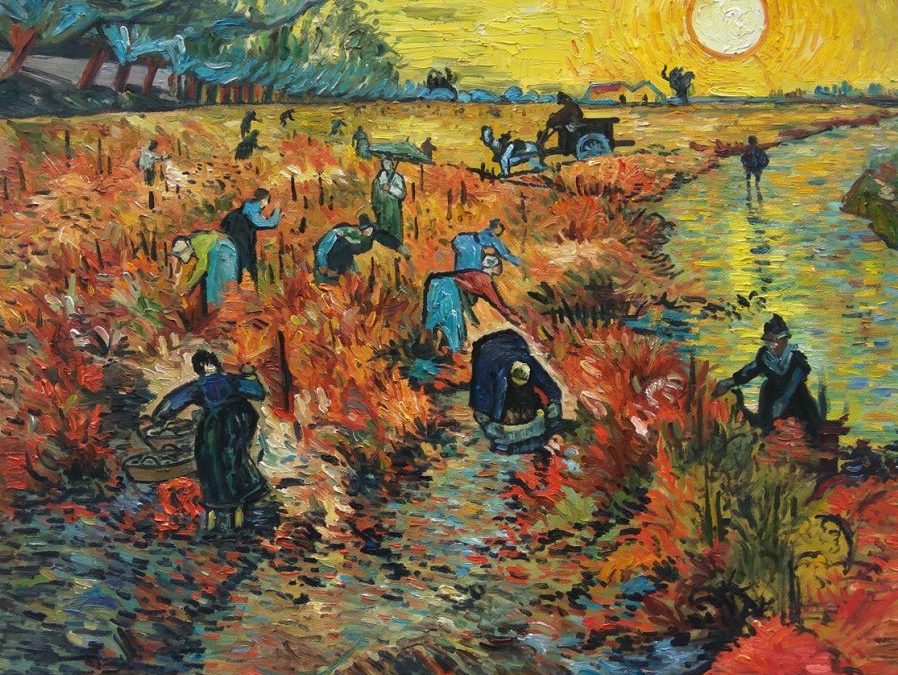
Feb 16, 2021 | Opinion
By Carson Shilts (VI)
Art has always been very timely in that one can easily identify the time period of a painting based on its style; and up to this point, artistic movements are usually the byproduct of a shift in social and political climate. For example, expressionism was a result of the horrors that people endured during the eras of World War I and II, as expressing oneself through abstract artistic representations allowed a sort of solace. Popular art today is difficult to define because it is seen as a mixture of many different art movements, while still creating a collective. Artists have seemed to discover that, in order to create something new, one does not have to forget the past—rather, one ought to be inspired by it. This ideology has allowed for new art movements to emerge as a result of previous art movements. It takes time, however, for a new style to become established and en vogue. Artists whom we now consider pioneers and geniuses were rejected in their times. Vincent Van Gogh, for example—an artist who we now consider one of the greatest painters of all time—only sold one painting during his lifetime, and was rejected from multiple exhibits. So, what can we take away from this progression of rejection and then later glorification? I believe that the way people treat art can be paralleled to the way in which people treat progressivism as a whole.
Historian and author Timothy Snyder wrote, “It is those who were considered exceptional, eccentric, or even insane in their own time . . . whom we remember and admire today.” This holds especially true as we look back again on those great pioneering artists like Vincent Van Gogh, Edgar Degas and Claude Monet. The rejection of their work and, in a sense, their ideas alienated them from society. It is a toxic trend among humans to shy away from change and to stifle anyone who dares disrupt our seemingly complete knowledge of the world. As a result of this, innovative minds are shunted into a corner where their ideas are only spread to a closed group of like-minded people. Rejection is exhausting and to put oneself out there repeatedly, only to be criticized, especially on such a personal matter as art, would no doubt drive someone to madness.
However, it is this small group of pioneers that truly hold the power. As Michael Leja writes, “The success or failure of works of art in targeting cultural pressure points may be registered in the volume of attention they receive.” Instead of feeling guilty for liking a painting that doesn’t line up with the current, conventional standards, perhaps one should just purchase it, and display it proudly in one’s home. The success of a movement is dictated by the support it generates from society. This support can be contagious, and it can show that a standalone artist isn’t insane or eccentric anymore, and rather, they are accomplished and heard. This is how movements spread, grow, and evolve.
This doesn’t just apply to art. Progressive ideas are ever-flowing, and it is important that we find what we believe in and present it to the world, just as you would a controversial painting, because the artist, activist, politician, writer, or scientist, will never be regarded with respect until they are publicly discussed. This discussion allows room for growth from all people, as it encourages others to speak up, other perspectives to be heard. Think of the world as a never-ending discussion; artists, writers, and just about everyone else are constantly discussing, waiting for the world’s response. So, to put it simply, listen and respond.
Feb 16, 2021 | Sidebar News
By Ashleigh Provoost (V)
This year’s drama students have had to face an unparalleled level of difficulties in regards to their craft. With masks, remote classes, and social distancing, drama classes have been completely revamped to accommodate new health guidelines. Despite the adversity, the enthusiasm of the Drama Department still remains strong––especially that of senior actors. They faced their challenges with the utmost rigor, putting on a performance at the December 9 Drama IV Assembly that didn’t disappoint.
Every year, in designing the assembly, the group of seniors in the Drama IV class choose headlines that address events occuring in society. The students then write, direct, and act in scenes based upon the headlines they have chosen. What made this year so different, though, was the emphasis on the tumultuousness of the latter half of 2020. “We were aware going in that this, historically, is a production that students use to talk about social issues,” Cal Mahoney (VI) said. “We thought that it would be strange not to bring up everything that was going on.”
The ultimate goal of the assembly was to start conversation. “We needed to bring attention to the fact that people ignore or repress their reactions to hard situations,” Mahoney continued. “We wanted to bring attention to these current situations through the usage of both humor and scenes with strong themes in hopes to start that conversation.”
“The community needs conversation,” notes Ms. Stephanie Romankow, the Drama IV teacher. “With conversation, we continue to learn and grow together. Student perspectives and voices are the most powerful in this community, and we wanted to give the students the ability to share that voice.”
The Drama IV class also collaborated with Ms. Shelley Hartz, Director of Community and Civic Engagement, to delve more into the curriculum and history of the scenes prior to their development. “The students weren’t making up stories,” Ms. Hartz said. “They were using stories that actually happened; the inequities, unintentional biases, and microaggressions that were occurring concurrently really resonated with them. This is why the scenes carried such a strong tone.”
Naturally, the usual collaborative process that goes into the presentation of this assembly proved to be much more difficult this year due to COVID-19 restrictions. “This has not been an easy feat,” Ms. Romankow said. “Theater is all about connection, and this year there are multiple barriers in terms of masks and social distancing. The seniors, though, were able to take these obstacles in stride and really succeed.”
This group of seniors is quite a remarkable and diverse one. Having been together for four years, the students in the class have built a community that supports one another. The closeness they share makes the collaboration needed for this assembly all the more meaningful. “The collaborative part of it was super important, especially because of our comfortable class dynamic,” Mahoney said. “We’re not afraid to get deep.”
The Drama IV Assembly most certainly achieved the goal that the students had hoped for. “It was weird as an actor to not know how you were perceived. It was hard to tell if the performance was successful, but [the class] decided that it had to be … People were listening and they confronted these current issues.” Mahoney also spoke to the uniqueness of this specific performance: “We challenged people’s perceptions of theater. It was a good decision to do something that the audience had trouble to watch. I think that a lot of these scenes made people uncomfortable; discrimination was right in front of you, and you had to watch it happen. And that was the point.” Ms. Romankow added, “Kids did not know how to react to the ending of the assembly. They needed to take pause, and that’s important for us to do. We’re not providing the answers to these issues; we’re just sharing our perspective.”
Ms. Romankow couldn’t emphasize enough how proud she was of the senior class. “The impact this had on the class was invaluable. It allowed for creative expression and for expression of values and concerns and community. It certainly was meaningful, at least for me, to work through this process with the kids.” She also spoke to the senior class as a group: “The amount of openness, connectivity, care, generosity, and risk-taking from this group is tremendous. I can’t imagine what they’re going through as seniors, but I am truly honored to be going on this journey with them.”
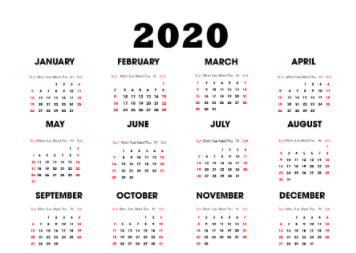
Feb 16, 2021 | COVID-19
By Sophia Lewis (V)
The entirety of 2020 was definitely one for the history books, but when I think back to the past year, I think of January and February most––the two months before the pandemic hit full-force. Almost one year ago, the first case of the coronavirus was diagnosed in the United States. Though a serious matter, the general public was naïve to what this meant, as COVID-19 still seemed to be “that virus ravaging China.” By February, I saw only a couple of people wearing masks in public, and the only thought crossing my mind was: “Why are they wearing masks?” More time passed, and instead of reading the news and worrying about what COVID-19 spread actually meant, I was preparing to perform in Pingry’s rendition of Chicago and participate in my first year of serenades with the Balladeers. On March 13, however, all my plans halted.
The year turned around completely. The day I was supposed to be packing my suitcase for the annual Disney trip with the softball team, I was buying extreme amounts of toilet paper and groceries with my mom, still grieving over the fact that school would be remote for a month. Nobody knew what the future would hold; instead of enjoying spring activities, concluding yet another tedious school year, and readying ourselves for the much-anticipated summer break, we were shut up in our homes with nothing to look forward to, except trying to figure out what exactly remote school was and wondering where exactly the mute button on Google Meet was. On the last day of school, instead of feeling triumph, I felt tired. Instead of going to the beach, seeing friends at camp, or travelling with our families over the summer, we had only one option: online programs, and the furthest traveling we did was to the kitchen.
After what seemed like a never-ending summer, Pingry announced that they would be inviting students back to school in person, and I was thrilled. Although optimistic about my first day back in September, I remember the day as bleak, as everything I’d liked about school had been eliminated. After the conclusion of the day, I had heard the phrase “new normal” so much, I could’ve screamed. Lunch, which was once an enjoyable time for eating and socializing, was now a challenge, as communicating with friends through the plexiglass barriers proved to be an impossible task. The worst of it all, however, was that I didn’t truly mentalize being a junior, as I had never gotten a proper conclusion of sophomore year.
After looking back at the year, the prevailing question is this: where are we now, one year later? We arrive at school in masks, attend class with plexiglass barriers, and socialize with social distancing. Most contact sports and extracurriculars have been delayed or canceled, but others activities move forward, with restrictions, of course. All activities, in and out of school, have had complete structural changes. Eating at restaurants or going to see movies with friends are activities of the past. Concerts, baseball games, or just about anything with a large crowd involved are nothing more than a mere memory; just the sight of a large crowd is enough to scare people back into their homes.
Despite the challenges, the pandemic is in a different spot now than it was one year ago. We now have two vaccines that have been approved and have begun being administered to the public. In addition, after a year, mask-wearing has become the “norm”. While it can be argued that any “silver lining” pointed out about COVID-19 at this time is not very promising, I do believe that there have been some once-in-a-lifetime opportunities during this pandemic era. So, with our masks on, let’s look for the light at the end of the tunnel.
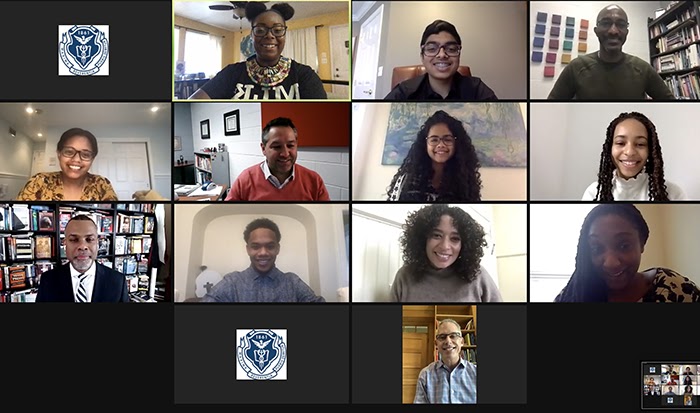
Feb 16, 2021 | Sidebar News
By Anjola Olawoye (IV)
Over 700 members of the Pingry community tuned into the annual Martin Luther King Jr. Assembly virtually. Throughout the years, this esteemed Pingry tradition has hosted various speakers, performances, and even skits to honor King’s legacy. A couple of years ago, Sarah Collins Rudolph, a survivor of the bombing of Birmingham’s 16th Street Baptist Church, shared her distinctive experience during a MLK assembly. This year, we had the privilege of hearing reflections and perspectives on Dr. Martin Luther King Jr’s legacy, presented by Dr. Eddie S. Glaude Jr.
Dr. Glaude Jr. is a James S. McDonnell Distinguished University Professor and the Department Chair of African American Studies at Princeton University. He has been featured in numerous media outlets, including NBC’s Meet the Press, MSNBC, and CNN. Dr. Glaude earned his Ph.D. at Princeton University and currently holds degrees in African-American studies and religion.
At the beginning of the virtual assembly, the members of Pingry’s Afrofuturism HIRT (Humanities Independent Research Team) introduced themselves and Dr. Glaude. Throughout his reflections, Dr. Glaude often quoted King and James Baldwin, a civil-rights era African American novelist. He addressed numerous questions regarding our current political climate, including the following: how would MLK react to the events that plague our country today, and is America ready for a true multi-ethnic and racial democracy that would resonate with MLK’s legacy?
Furthermore, Dr. Glaude compared the US Capitol riots in D.C on January 6th to Black Lives Matter protests over the summer, particularly emphasizing police responsiveness in both situations. More importantly, he explained the division of our country and the events that perpetuated it. The most significant phrase Dr. Glaude cited from Dr. King was “equality is a loose expression for improvement.” While King believed that Americans viewed racial harmony differently, he still strived for a peaceful coexistence among the races. In the words of Dr. Glaude, “Dr. King’s legacy has been reduced to a four-word sentence: ‘I have a dream.’”
Towards the end of the assembly, Dr. Glaude offered a dual challenge to both America and Pingry by posing the following question: what kind of school does Pingry want to be? Beyond that, what are the expectations of America? He also encouraged Pingry students to live up to the school’s values, especially those stated in the Honor Code.
Overall, students learned from and enjoyed the assembly, as evidenced by the interactive Q&A session. Students shared a plethora of thoughts on Dr. Glaude’s words. For example, Dhruv Nagarajan (II) asked, “What sparked Dr. Glaude’s activism for social justice and wanting to make a change?” Student Body President, Nolan Baynes (VI), stated that this was one of the most important assemblies we have had at Pingry. Other students from various grade levels also reflected on their individual experiences and takeaways from Dr. Glaude’s speech.
The Pingry community also honored Dr. King in other ways, especially through community service. On MLK Day, Pingry students, parents, and faculty members engaged in the annual “MLK Day of Service,” albeit virtually, to fulfill Dr. King and his everlasting legacy.
The Pingry community thanks Dr. Glaude for his impactful speech.
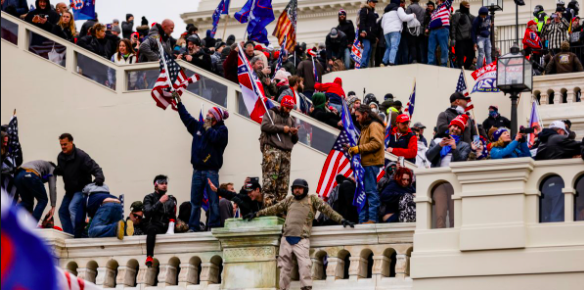
Feb 16, 2021 | School News, Sidebar News
By Kate Marine (III)
On the morning of January 7th, Upper School students were given the opportunity to attend various processing sessions via Zoom in response to the unprecedented events that occurred at the US Capitol Building the previous day. Among these sessions was a news brief, also via Zoom, from Mr. Matt Honohan. It aimed to give students and faculty some guidance in understanding what exactly transpired at the Capitol, and how our country came to such a point.
Mr. Honohan is a faculty member of the Upper School History Department, where he currently teaches World History 10, as well as three sections of AP Government and Politics. “I have a real passion for our country, and for our political system,” Mr. Honohan said, regarding his position as a government teacher, “so what I really enjoyed about [the news brief] was [bringing] a slice of what I do in AP Gov to the student body as a whole.” The session’s goal was to give both students and faculty a better sense of the country’s current situation, with the hope that understanding this event would be the first step towards processing it. With all the chaos that has accompanied the 2020 US election, Mr. Honohan especially wanted the talk to address a central question: how did we get here? “We wanted students to have a better chance of understanding why we had such chaos in the Capital, and [of understanding] some of the legal and constitutional reasons why things got so messy by January 6th,” Mr. Honohan said.
In terms of its impact on the Upper School community, the news briefing on January 7th was successful and received positive feedback from both students and faculty. “Before, I had a cursory understanding [of the January 6th events],” Leon Zhou (III) said, “but after attending the briefing I had a much more detailed understanding of the events that happened, and ones leading up to them.”
Although we hope that the events of January 6th will never have to repeat themselves, Mr. Honohan stresses the importance of staying politically engaged in the world around us. “One of the things I particularly love about teaching government is [that] it is, in a fundamental way, citizenship training,” Mr. Honohan said. “Everybody in the school is going to be eighteen soon and voting.” For that reason, although he does not expect students to “be massively politically engaged,” Mr. Honohan hopes that events like the storming of the Capitol can demonstrate to students the very real and immediate consequences of politics affecting the country as a whole. “It’s easy to live life from crisis to crisis, but the challenge is to develop a degree of consistent engagement,” Mr. Honohan explained. “I hope [these events] spur students to be more consistently engaged in the world around them.”
In such unstable times, events like the ones of January 6th can easily seem scary and overwhelming to the average newswatcher. It is for this reason that staying educated is so important to processing the events both individually and as a community. “The events of January 6th and [similar] events will only drive us apart using fear and political divide,” Zhou said. Unless, of course, we bridge that divide with political awareness and common understanding — perhaps that bridge is the one thing we can keep stable amidst a turbulent year for our country.
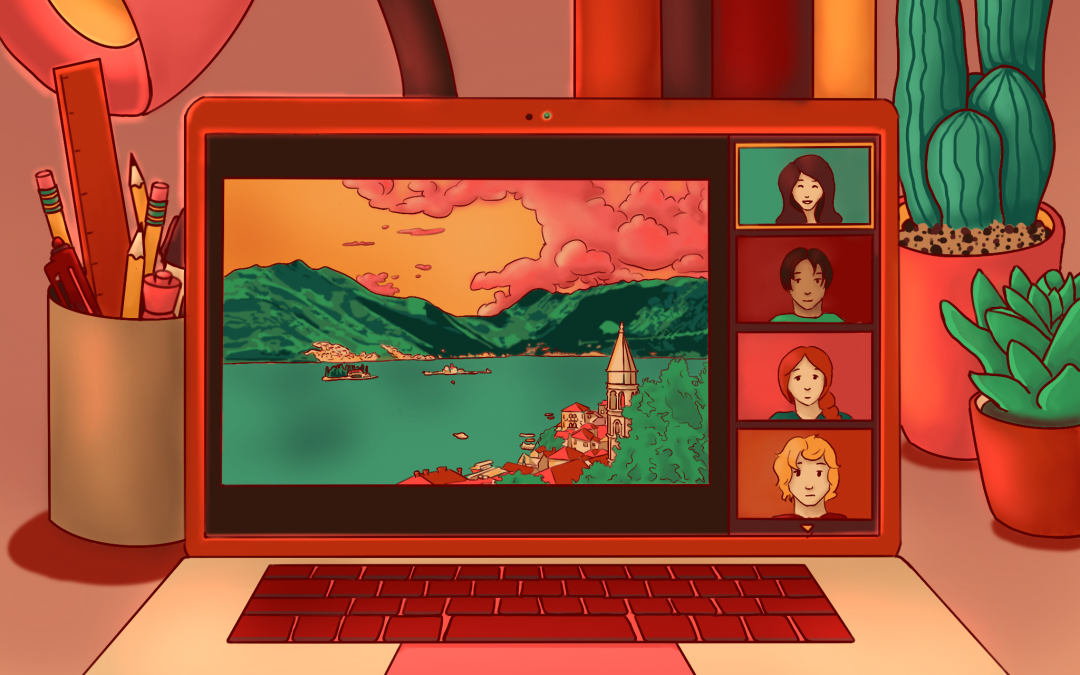
Feb 16, 2021 | Mirika Jambudi, Sidebar News
By Mirika Jambudi (IV)
Over Winter Break, students were given the opportunity to participate in Pingry’s first ever virtual Global Program. Ms. Julia Dunbar, Director of Global Education and Engagement, and Dr. Megan Jones, History Department Chair, worked together to convert this Global Studies Program into a three-day virtual course with the help of Atlas Workshops.
This program was based on the previous Global Studies Program, “Nations at a Crossroad: Nationalism and Religion in the Balkans,” which was a thirteen-day travel course. In that course, students visited areas of Croatia and Bosnia and Herzegovina, learning about the Yugoslav Wars and the underlying nationalist strife that caused the regional divisions.
In this year’s virtual recreation of the trip, students were able to meet and speak with actual residents of the countries. Many shared that these conversations were one of the most valuable aspects of the Program. For three hours each morning, from December 21st through 23rd, Pingry students dove into the history and politics of the former Yugoslavia, meeting and interacting with locals, participating in group discussions and activities, and ultimately working towards an answer to the overarching essential question, “What makes a nation?”
Ms. Dunbar and Dr. Jones remarked that they were very pleased with the virtual program. Although the “power of in-person travel is irreplaceable,” the Global Education and Engagement Department hopes to offer more virtual courses to Pingry students as “a complement to [Pingry’s] travel programs.”
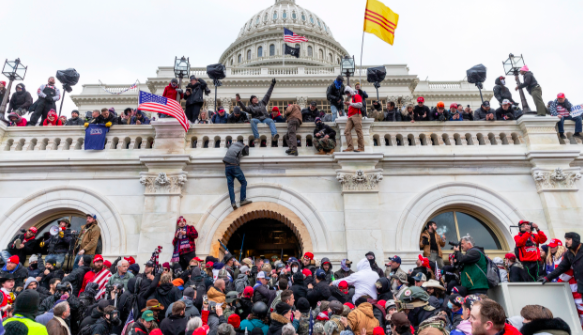
Feb 16, 2021 | Sidebar News
By Sophia Lewis (V)
On January 6, supporters of President Donald Trump gathered in Washington, D.C., to protest the Congressional certification of the 2020 presidential election. Following the rally, a group of rioters stormed the Capitol Building. Four rioters and one Capitol Police officer died as a result of this assault.
The protestors had arrived in D.C. bearing signs and wearing shirts that read “Trump 2020” and “Stop the Steal.” After initially protesting outside the White House, they were greeted by President Trump, who demanded that Vice President Mike Pence and other members of Congress seek to overturn the election results. Following Trump’s speech, the rioters pushed through a barricade and stormed the Capitol. They broke windows, released chemical gas in the hallways, and vandalized congresspeople’s offices, most notably that of House Speaker Nancy Pelosi. Some even made it into the House Chamber, where one rioter stole a lectern. The Capitol had to be evacuated, and pictures of congressmen and congresswomen hiding between seats in the Chamber quickly circulated.
The riot, which was broadcasted on nearly every news outlet, left many people in the Pingry community feeling shocked, appalled, and angry. That night, as Congress resumed the vote count, Head of School Matt Levinson emailed the community, condemning the riot and discussing the Honor Code in the context of American democracy. “The concepts embodied in [the Honor Code] are timeless, particularly…working for the common good rather than solely for personal advantage.”
It was then announced that there would be two processing sessions to be held the next day during the first two class periods. The sessions welcomed hundreds of Pingry students and faculty members, and even as Zoom calls capped at 400 participants, community members listened in through phone calls and FaceTime. There were a multitude of emotions during these sessions. Many students were angry and upset, with a few close to tears. Some chose to share their personal experiences, while others chose to listen. Many students’ common frustration was the Capitol Police’s lack of response to the rioters in comparison to their response to the Black Lives Matter protests that took place over the summer, where swarms of guards lined the Capitol steps. Many students also expressed disgust over Confederate flags and anti-Semitic articles of clothing (such as a “Camp Auschwitz” sweatshirt) making it into the Capitol.
In addition to the processing sessions, there was another session held by Mr. Honohan, where he provided students with an overview of the events leading up to January 6, to help them understand why and how the riots occurred. He also discussed the constitutional issues surrounding the election and why President Trump had called for his supporters to protest in D.C. on January 6. Mr. Honohan stated that he “hope[d] that by providing background information, students would feel better equipped to process the events that occurred.” During CP, Mr. Levinson held separate meetings with upperclassmen and underclassmen to share his thoughts on the event.
Overall, many in the Pingry community were pleased with the swift response. One thing that stood out was that, even during normal class time, teachers chose to bring up the subject and give students a space to process the event, showing the solidarity we have as a community.
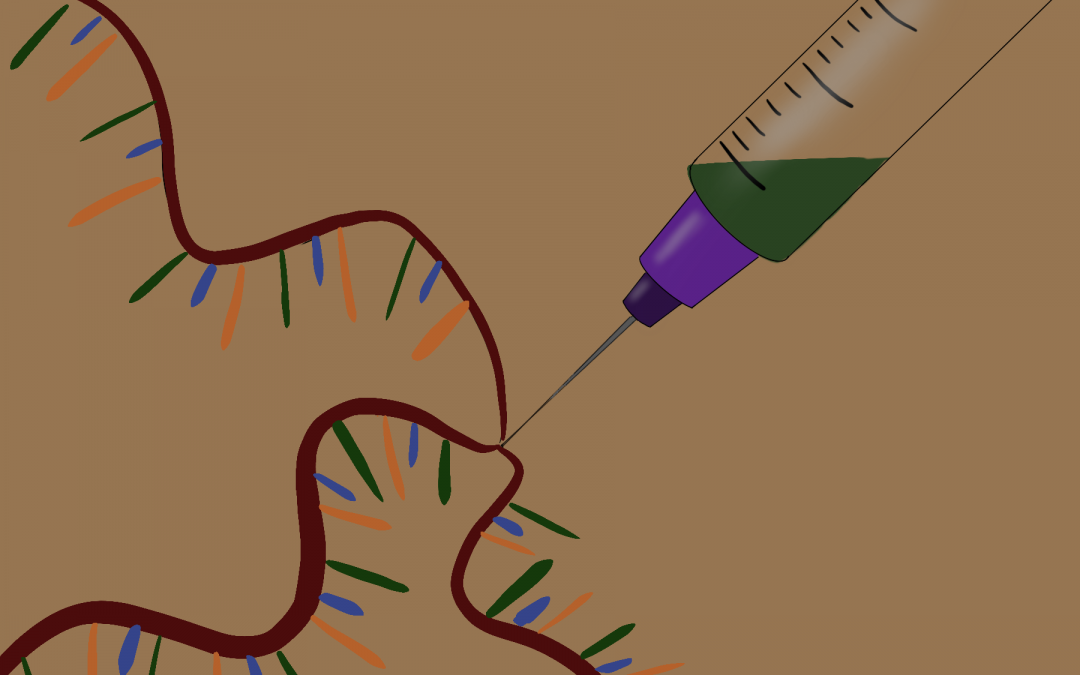
Dec 11, 2020 | COVID-19, Investigative
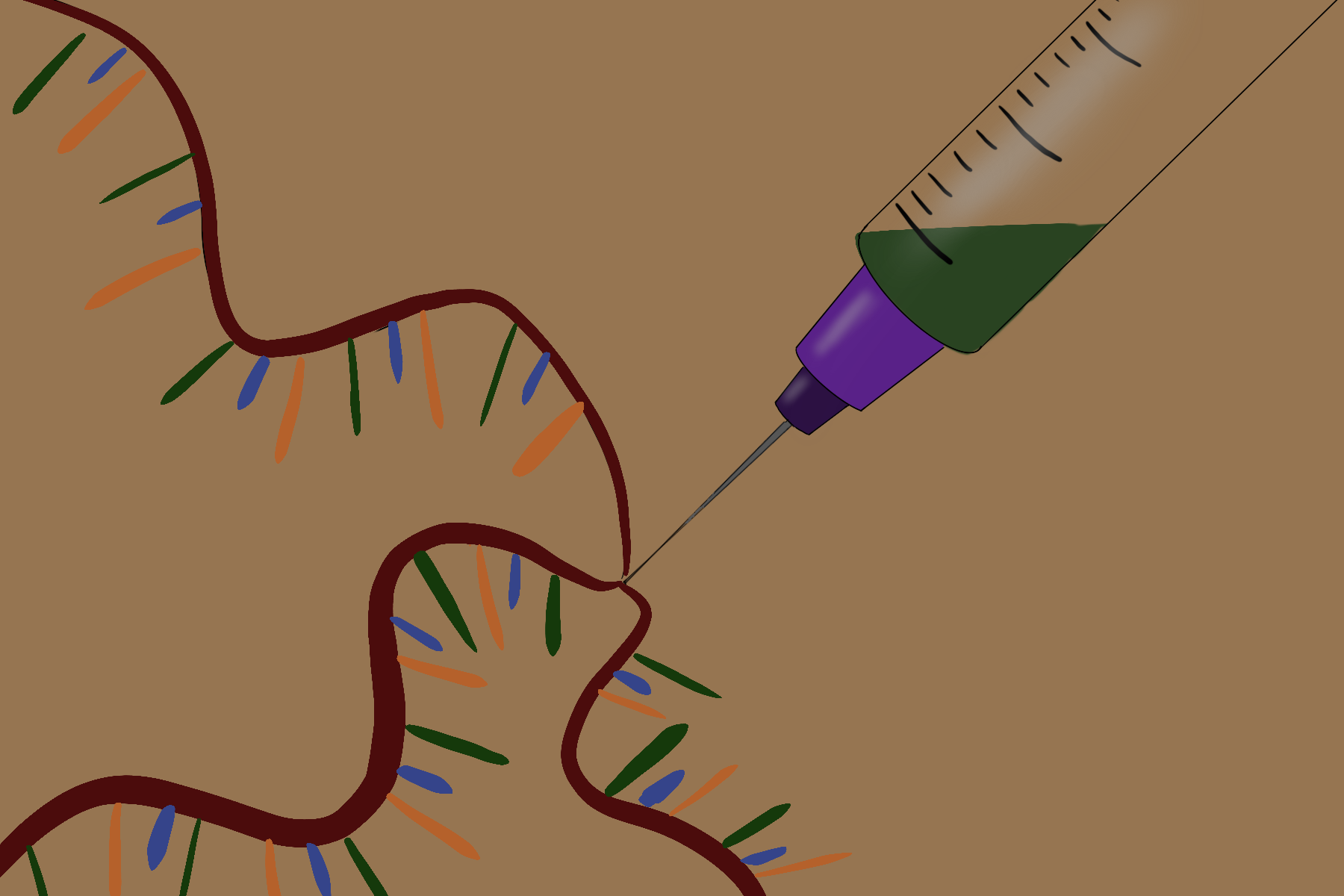
By Evan Wen (IV)
Can a COVID-19 vaccine bring life back to normal? Early data suggests that certain vaccines could be the answer to this question. However, the Centers for Disease Control and Prevention (CDC) has a long and elaborate process for approving said vaccines. The process begins with an exploratory and preclinical stage, followed by clinical development; within the latter is a three-phase process. Phase I includes small groups of people receiving the trial vaccine. In Phase II, the vaccine is given to groups of people who fit a target demographic. For the final phase, the vaccine is given to thousands of people to test for both efficacy and safety. Once the vaccines pass Phase III, companies must receive approval from the FDA before manufacturing and mass-distributing the vaccine. Once the vaccine is distributed, the Vaccine Adverse Event Reporting System monitors the side-effects. As of November 24, 2020, five companies––AstraZeneca, Jannsen, Moderna, Novavax, and Pfizer––are going through or plan to go through Phase III clinical trials.
When infected with COVID-19, it takes several days for a person’s body to recover from the infection. During this recovery period, the body creates the necessary tools to fight off the infection and the immune system proceeds to store information about how to protect the body against COVID-19 in the future. The vaccines allow the body to produce the necessary white-blood cells to attack the virus and defend itself from infection without contracting it.
There are three types of vaccines that are currently in Phase III of clinical trials: an mRNA vaccine, a protein subunit vaccine, and a vector vaccine. The mRNA vaccine contains genetic information that allows the virus to create a specific protein that lets the body make copies of said protein. When infected with COVID-19, the body will detect this protein and create white blood cells that will fight off the virus. Meanwhile, protein subunit vaccines harness pieces of proteins from SARS-CoV-2 (the virus which causes COVID-19), and, similar to the mRNA vaccine, the body creates white blood cells to fend off these proteins. Finally, vector vaccines contain a weakened version of the live virus that the body then uses to first learn about COVID-19 and create the defensive white blood cells thereafter.
Moderna and Pfizer Pharmaceuticals have released data from Phase III trials, both companies planning to release mRNA vaccines with approximately 95% success rates. In trials done by Pfizer, patients were analyzed 21 days after being given their vaccine whereas Moderna analyzed its patients 14 days after administration, and results show that both vaccines have had little to no side effects. A major difference between the two vaccines, however, is in the way they must be stored in order to maintain efficacy. Pfizer’s vaccine must be stored at -112 degrees Fahrenheit for up to 5 days, requiring special freezers found in labs and hospitals. In stark contrast, Moderna’s vaccine can be stored between 36 to 46 degrees Fahrenheit while being able to stay in the refrigerator for 30 days. As both vaccines wait to be approved by the FDA, both companies begin to make plans for widespread distribution.
Our community has taken drastic measures to slow the spread of COVID-19 by wearing masks and staying socially distant. By continuing the current safety measures and following the CDC’s recommendations––especially as vaccines are approved and distributed––the return of normalcy may soon be upon us.
Dec 11, 2020 | Fun, Monica Chan
By Monica Chan (VI)
English 9: Angsty freshmen reading about other angsty freshmen.
English 10: No one actually read Jane Eyre.
Advanced Algebra and Trigonometry Honors: You thought you were good at math, didn’t you…oh well…
AP Statistics: Dear Ms. Peake, can you send me the entire Upper School student email list? I need to do another survey.
Math 6: https://www.wolframalpha.com.
Any Mr. Poprik class: “Ok Folks!”
Any Computer Science Class: The Labs and Problem Sets will bring my grade up, right?
AP US History: More like APUSH me off a cliff please.
US Environmental History Honors: Why didn’t I sign up for APUSH?
American Society and Culture: Boy, am I glad I didn’t sign up for APUSH.
Art Fundamentals: Wait, I thought this was supposed to be an easy graduation requirement!
Chemistry I: Colorado PhET.
AP Chemistry: A 70% curves to an A, right?
Honors Biology II: Were the Bio I Honors Projects not enough of a deterrent for you?
AP Physics C: Mechanics: Everything you learned last year, but add the word “derivative.”
AP Physics C: Electricity and Magnetism: Math 7.
Dec 11, 2020 | Editorial, Meghan Durkin
By Meghan Durkin (VI)
Following a recommendation from a friend to my mom, and then to me, I ordered a copy of Susan Cain’s “Quiet”—and well, the rest of the title spoils its thesis, so I’ll wait on that. The book follows society’s distaste for introversion, a trait Cain notes is seen as “a second-class personality trait, somewhere between a disappointment and a pathology” (Cain 4). Well, if introversion is a “pathology,” then extroversion is its cure. Society loves to love extroverts; we admire charismatic speakers and outgoing performers more than we care for quiet bookworms. Pingry too loves to praise its extroverts: if you’re not a voice in discussion, were you there at all? I love Cain’s book for its unparalleled argument against these values; the aforementioned title, a glimpse into the book that follows, ends like this: “The Power of Introverts in a World That Can’t Stop Talking.”
This call for extroversion begins in a fundamental place: schools. Cain begins her book with an acknowledgement of this: “at school you might have been prodded to come ‘out of shell’—that noxious expression which fails to appreciate that some animals naturally carry shelter everywhere they go, and that some humans are just the same” (6). Cain recognizes the natural incompatibility many introverted students have with school. You have to talk.
I’ve experienced many of the “come out of your shell” comments as a Pingry student. My interim reports never fail to mention that I’m “not the biggest talker” or “a dominant presence” in class; a particular favorite comment of mine is “she could benefit from getting involved even more in conversations.” Now, I do wish I was more comfortable with my status as a “quiet student,” yet it’s difficult not to see the introverted, soft-spoken part of my personality as an unshakeable weakness.
Often, what you say is greater than what you write, do, or present. Without a voice in demand of attention, your other contributions fall short. Unfortunately, not all strengths are made equal. More than ever, there’s a demand for “soft-skills.” Everyone, from friends to teachers to bosses, wants people who excel in communication and teamwork, or are confident and humorous. Our culture, and our school, admire “people skills” above everything: unfortunately, for many introverts, these skills don’t always come naturally.
Thus, here’s my take.
For students: it’s good to play to your strengths. Yes, there are benefits to stepping out of your comfort zone, but there’s validity in doing that on your own terms. If you like being quiet, be quiet. If you like to talk, then talk. Extroversion is not a trait of success, just as introversion isn’t a recipe for failure. Maybe find a little bit of both.
To Pingry teachers: forcing uncomfortable students to speak is not a reliable tool to change your “quiet” students into “talkative” ones. More often than not, it perpetuates a sense of inadequacy for a trait people are incapable of changing. Why can we only celebrate the people that lead the conversation? What about the thoughtful, attentive listeners? Or the students who bring creativity? Organization? How did we conclude loud is a far better quality than quiet? Why have Pingry teachers fostered learning environments that suit their extroverted students far more than any others?
While I often wish I could be, I am not the loudest in the room. I hate volunteering to answer questions, I don’t like raising my hand, and I don’t want to present in class. There is a constant fight circulating in my mind when I try to do so, and it’s often I fight I lose to my introversion. Though, as Susan Cain suggests in her book, introverts have something unique to offer our loud, hectic world: some quiet.
Dec 11, 2020 | Editorial, Noah Bergam
By Noah Bergam (VI)
George Orwell once wrote that our language “becomes ugly and inaccurate because our thoughts are foolish, but the slovenliness of our language makes it easier for us to have foolish thoughts.”
I wish Orwell could have seen Twitter.
But look––this isn’t a rant about social media per se, or even political discourse. I want to talk about “slovenly” language specifically as it relates to the learning experience. The word of the day is “interesting,” a word used and abused so often inside the classroom that it’s become a default response, an easy out to intellectually discourse.
If we want to challenge ourselves as learners, we ought to ponder: what does “interesting” really mean? How long does the comment at hand capture the imagination? Does it trigger new thoughts and connections?
Maybe you had a genuine intellectual dopamine rush. You’ve dug deep, and you’ve found that there’s really no justification except an appreciation for the underlying beauty of a Faulkner passage or a clever computer algorithm. That’s okay. To an extent, it’s necessary. We all ought to stop and smell the roses every once in a while, especially in fast-paced, lecture-heavy STEM courses. But when it comes to the humanities, where student insight reigns supreme, we should be more mindful of our language.
After all, we don’t write book reviews in English class. We write critical essays, make evidence-based arguments in our writing––and we should expect no different from our verbal discussions. The core issue with “interesting” is that it effectively cuts out the need for justification, turning commentary into a passive, antiquarian pursuit.
As we saw earlier, Orwell voiced his concerns about the feedback loop between words and thoughts. But while Orwell speaks of language that is “foolish,” I’m more concerned with that which is vacuous. We have a word at our disposal that can mask critical thought and make the classroom far more comfortable than it ought to be. In the drain of hybrid learning, we have every incentive to use this word to patch up complications, misunderstandings, turning discussions into strings of weak non-sequiturs. Whether you are a teacher or a student, I implore you to be cautious. “Interesting” makes Zoom learning more remote than it has to be.
And no, “fascinating” is not better. Maybe we could hear “scintillating” a little more often, but ultimately, all these one-word substitutions reach the same dead end. There’s no easy answer to the linguistic dilemma at hand. It takes a community-wide consciousness to limit our use of the i-word. If you hear it, ask for follow-up. If you use it, provide some.
Keep in mind your agency over language. If you want a classroom that’s more than just “interesting,” it starts with you.
Dec 11, 2020 | Athletics
By Brooke Pan (VI)
Although Pingry athletics does look very different this year, the Girls’ Squash team is plowing forward unfazed. Led by captains Lauren Drzala (VI) and Mahek Hemani (VI), the team has put in hours of work on the courts in preparation for the season. The captains have also made an effort to replicate the team aspect of the game as well. In replacement of the usual sleepovers, Drzala and Hemani have many other team bonding activities in store for both the varsity and JV teams. There are still many changes to the sport that are beyond anyone’s control: “Our season has been severely cut in terms of length, as now we only have a month or two,” Hemani said. “Our matches are definitely reduced and the most fun activity at the end of the season, Nationals, will most likely be cancelled as well.” Despite the issues that COVID-19 has imposed on the team, Drzala noted that “it is a difficult time for everyone and our number one priority is to keep everyone safe. Fingers crossed if everything cools down before the end of the season, I’d look forward to a promising season.”









